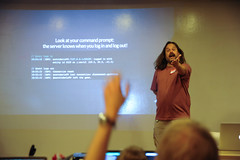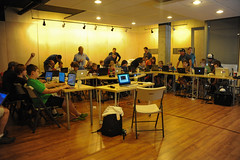Over the last couple months, I've received a few emails asking why I prefer IntelliJ IDEA over Eclipse. They usually go something like this:
I keep seeing you recommending IntelliJ. I keep trying it intermittently with using Eclipse, but I feel like I'm missing something obvious that makes so many people think it's better.
Granted having the usual plugins incorporated is nice, but other things like the build process and debugger sometimes seems a step back from Eclipse. Could you please blog a '10 reasons why I love IntelliJ' or point me to something that would clue me in?
I grew to love IntelliJ for a few reasons. It all started in 2006 when I decided to migrate AppFuse from Ant to Maven. Before that, I was a huge Eclipse fan (2002 - 2006). Before Eclipse, I used HomeSite, an HTML Editor to write all my Java code (1999-2002). Eclipse was the first IDE that didn't hog all my system's memory and was pleasant to work with.
The reason I started using IntelliJ in 2006 was because of it's multi-module Maven support. Eclipse's Maven support was terrible, and m2e hasn't gotten a whole lot better in recent years AFAIK.
Back then, I used to think everything should be built and run from the command line. A couple years later, I realized it was better to run tests and debug from an IDE. Now I'm more concerned with the ability to run tests and debug in an IDE than I am from the build system.
In 2009, I started doing a lot more front-end work: writing HTML, CSS and JavaScript. I also started digging into alternate languages for these: Jade, GWT, CoffeeScript, LESS, SASS - even Scala. I found IntelliJ's support, and plugins, to be outstanding for these languages and really enjoyed how it would tell me I had invalid JavaScript, HTML and CSS.
My original passion in software was HTML and JavaScript and I found that hasn't changed in the last 15 years. AFAIK, Eclipse still has terrible web tools support; it excels at Java (and possibly C++ support). Even today, I write most of my HTML code (for InfoQ and this blog) in IntelliJ.
In reality, it probably doesn't matter which IDE you use, as long as you're productive with it. Once you learn one IDE well, the way others do things will likely seem backwards. I'm so familiar with debugging in IntelliJ, that when I tried to use Eclipse's debugger a few weeks ago, it seemed backwards to me. 
In a nutshell: the technologies I've worked with have been better embraced by IntelliJ. Has this happened to you? Have certain technologies caused you to use one IDE over another?
 Last week I was tasked with developing a quick prototype that used AngularJS for its client and Spring MVC
for its server. A colleague developed the same application using Backbone.js and Spring MVC.
At first, I considered using my boot-ionic
project as a starting point. Then I realized I didn't need to develop a native mobile app, but rather a
responsive web app.
Last week I was tasked with developing a quick prototype that used AngularJS for its client and Spring MVC
for its server. A colleague developed the same application using Backbone.js and Spring MVC.
At first, I considered using my boot-ionic
project as a starting point. Then I realized I didn't need to develop a native mobile app, but rather a
responsive web app.








